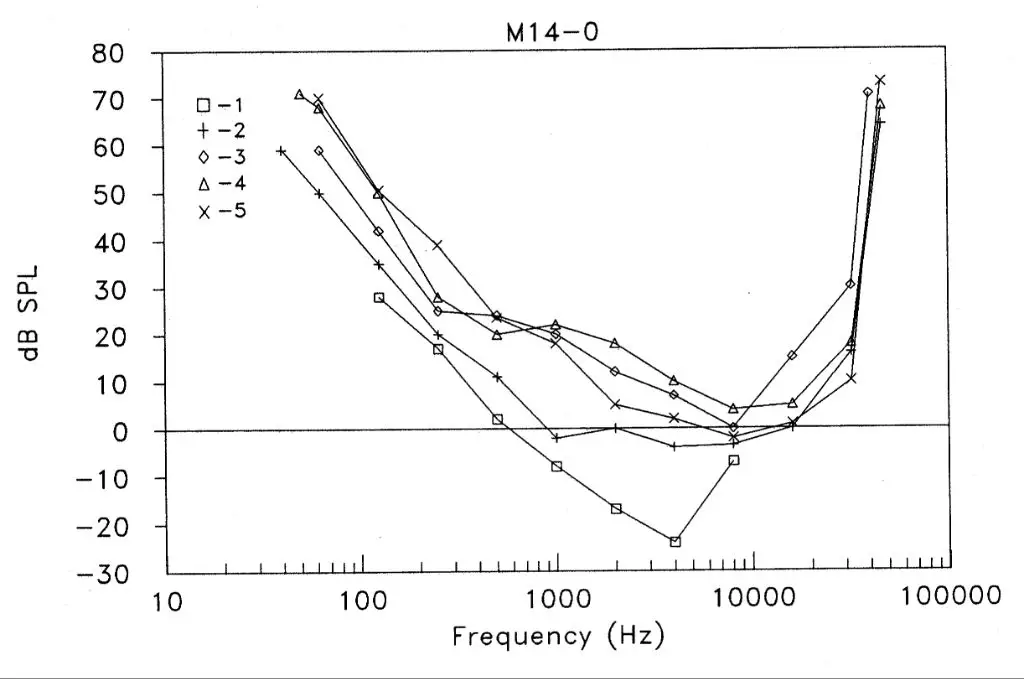Introduction
Dog whistles are high-pitched whistles that emit sounds at frequencies above the range of human hearing. The sounds they produce are in the ultrasonic range, meaning at a frequency above 20,000 hertz (Hz). Humans generally cannot hear these high frequency sounds that dog whistles produce, but dogs and some other animals are able to hear them.
This leads to the phenomenon that gives dog whistles their name – humans cannot hear the whistle when it is blown, even though dogs clearly react to the sound. The reason humans cannot hear dog whistles relates to the normal range of human hearing compared to other animals like dogs. Understanding the ranges of human and canine hearing helps explain why humans cannot hear the high pitched frequencies of a dog whistle.
Dog Whistle Frequencies
Dog whistles operate at frequencies that are typically out of the range of human hearing. The frequency of most dog whistles is between 23 to 54 kHz (kilohertz), which falls above the normal human hearing range of 20 Hz to 20 kHz (Source 1). This means the high pitched sounds emitted by a dog whistle are inaudible to humans. While the exact frequency may vary by brand, most standard dog whistles produce sounds in the ultrasonic range around 35,000 Hz. This frequency level has been found to be quite perceptible and effective for capturing a dog’s attention (Source 2). So in summary, dog whistles operate at high ultrasonic frequencies, usually between 23-54 kHz, that are beyond normal human hearing capabilities but audible to canines.
Human Hearing Range
The typical hearing range for humans is approximately 20 Hz to 20,000 Hz (20 kHz), although there is some natural variation between individuals. Frequencies below 20 Hz are considered infrasonic, while frequencies above 20 kHz are ultrasonic (NCBI, 2022). The audible frequency range refers to the band of sound frequencies that can be detected by the average young human ear.
Human hearing is most sensitive in the 2,000 to 5,000 Hz frequency range. As people age, their ability to hear high frequencies diminishes, especially above 8,000 Hz. By middle age, many adults have lost the ability to hear above 16 kHz. This age-related high frequency hearing loss is called presbycusis. However, with normal hearing, most teens and young adults can detect sounds up to nearly 20 kHz.

Comparison of Ranges
The key reason humans cannot hear a dog whistle is the mismatch between the whistle’s frequency range and the typical human hearing range. Dog whistles are designed to operate at high frequencies above the range of human hearing.
According to Wikipedia, the frequency of most dog whistles is within the range of 23 to 54 kHz [1]. This range is well above the normal hearing range for humans, which is typically 20 to 20,000 Hz [2].
While the upper limit of human hearing can vary by age and other factors, even young children with excellent hearing max out at around 20 kHz. In contrast, dogs can hear frequencies up to 60 kHz or higher.
This large mismatch between the dog whistle frequency range and typical human hearing range explains why most people cannot detect the sound produced by a dog whistle.
Age-Related Hearing Loss

As we age, our hearing range becomes more limited, especially at the higher frequencies. This age-related hearing loss is known as presbycusis and is quite common in older adults. According to a 2018 review article published in Biomedical Journal, presbycusis affects around 35% of adults over the age of 70 (Salvi, 2018).
Presbycusis occurs as a result of changes to the inner ear and auditory nerves as we get older. These age-related changes typically manifest as high frequency hearing loss, impacting our ability to hear pitches above 2000 Hz (Sciencedirect). This explains why many older adults struggle to hear high pitched sounds like birds chirping or certain speech sounds.
In summary, presbycusis limits the upper range of hearing as we age. By our 70s, many of us lose the ability to hear frequencies above 2000 Hz due to age-related changes in the auditory system. This high frequency hearing loss is why most older adults cannot hear the high-pitched sounds of a dog whistle.
Other Factors Affecting Hearing Range
Besides aging, there are several other causes of high frequency hearing loss. Exposure to loud noises is a common cause of hearing damage, especially among young people. Prolonged exposure to noises over 85 decibels can damage the delicate hair cells in the inner ear that detect high frequency sounds (source). This noise-induced hearing loss often affects the higher frequency ranges first.
Ear infections and buildup of earwax can also muffle high frequency sounds. Certain medications like chemotherapy drugs, lasix, and aspirin can damage hearing over time. Autoimmune diseases, head injuries, tumors, and conditions like Meniere’s disease have all been linked to high frequency hearing loss as well (source). While aging affects overall hearing range, these factors preferentially damage perception of high pitched tones.
Can Some Humans Hear Dog Whistles?
While most humans cannot hear sounds in the ultrasonic range that dog whistles emit, some people are able to hear certain high frequency tones (source: https://www.quora.com/Is-it-normal-that-I-can-hear-dog-whistles). Typically, the ability to hear higher pitched sounds declines with age as people lose sensitivity to high frequencies. However, some young children and adolescents can perceive sounds at 18 kHz or above. Additionally, women may be slightly more likely to hear higher frequencies compared to men.
According to Wikipedia, the standard range of human hearing is from 20 Hz to 20 kHz (source: https://en.wikipedia.org/wiki/Dog_whistle). So while the average person cannot hear a dog whistle due to the high frequency pitch, the hearing range varies from person to person. Environmental factors like damage to the inner ear from loud noises can also impact an individual’s ability to hear high frequency sounds. In rare cases, some teenagers and young adults with normal hearing may be able to hear dog whistles that reach up to 22 kHz.

Electronic Dog Whistles
Electronic devices can also produce dog whistle sounds (Homemade-circuits.com). These digitally produced sounds are generated similarly to other electronic audio devices, using speakers or transducers that can reproduce frequencies up to the ultrasonic range that dogs can hear. Electronic dog whistles typically produce frequencies between 23 kHz and 54 kHz.
Compared to traditional whistles, electronic dog whistles allow for more precise, consistent sound production at customizable frequencies. Some units even include built-in microphones so owners can record a short custom sound that the device will play back (Wikipedia.org). Some electronic whistles also have adjustable volumes.
A key advantage of electronic dog whistles is they can produce ultrasonic frequencies that many adult humans cannot hear due to natural hearing loss at higher frequencies. This allows owners to give commands that people around them won’t hear.
Training Dogs with Whistles

Dog whistles are commonly used as a training tool for dogs. The high frequency sound grabs the dog’s attention and allows the trainer to communicate commands from a distance. To use a dog whistle effectively for training:
First, the dog needs to learn to recognize and respond to the whistle sound. This is done by pairing the whistle with a command the dog already knows, like “sit.” Each time the dog correctly performs the command on the whistle, they get rewarded with praise and/or a treat.
Once the dog consistently responds to the whistle cue, the trainer can start using the whistle for more advanced obedience behaviors. For example, dog whistles are often used for recall training, stopping unwanted behaviors like jumping or barking, or directing hunting dogs in the field.
The whistle allows trainers to reinforce commands from up to 400 yards away. The sharp, high-pitched tone cuts through background noise and gets the dog’s attention when verbal commands might go unheard. With patience and consistency, the whistle becomes a powerful communication tool between dog and handler.
According to craftycanineclub.com, whistles can be especially useful for recall training, as the unique sound helps the dog understand it’s a special command from their handler, even at a distance. However the whistle alone won’t train the dog – it must be used to reinforce behaviors learned through positive training methods.
Conclusion
In summary, the main reason why most humans cannot hear dog whistles is because of the difference between the frequency ranges of human hearing compared to dogs. The average adult human can hear sounds between 64-23,000 Hz, while dogs can hear sounds between 67-45,000 Hz. Dog whistles are specifically designed to produce ultra high-frequency tones from 23,000-54,000 Hz so they are beyond the auditory range of humans, but within a dog’s hearing sensitivity.
As we age, hearing loss also causes high frequency pitches to become less audible, so older adults are even less likely to detect dog whistles. However, some young children who have not yet experienced hearing decline can hear sounds in the range of dog whistles. Additionally, a rare few individuals retain excellent high frequency hearing even into adulthood. But for the vast majority of grown humans, dog whistles produce tones that are too high for our ears to pick up.